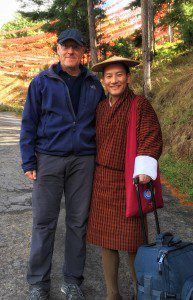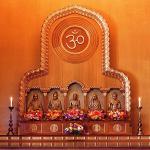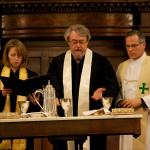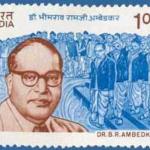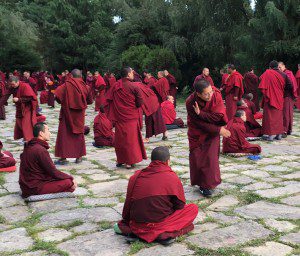 One night earlier this month at Lhodrak Karchu Monastery in Jakar, in the Bumthang district of Bhutan (the photo on the left is of monks there practicing debate), I set out for dinner at the cafeteria where the 80 or so mostly Western conference participants received meals. The cafeteria was four blocks from my dorm, down a winding road where I knew I was likely to pass a dozen or so friendly (or, at least, neutral) stray dogs who roamed the country, including the grounds of the monastery and sometimes the hallway of the dorm. During my jaunt to lunch, in addition to stray dogs, I had also met a handful of Jersey cows, moseying along, checking me out, and then returning to munching whatever they could find.
One night earlier this month at Lhodrak Karchu Monastery in Jakar, in the Bumthang district of Bhutan (the photo on the left is of monks there practicing debate), I set out for dinner at the cafeteria where the 80 or so mostly Western conference participants received meals. The cafeteria was four blocks from my dorm, down a winding road where I knew I was likely to pass a dozen or so friendly (or, at least, neutral) stray dogs who roamed the country, including the grounds of the monastery and sometimes the hallway of the dorm. During my jaunt to lunch, in addition to stray dogs, I had also met a handful of Jersey cows, moseying along, checking me out, and then returning to munching whatever they could find.
This evening, as I passed from the lighted area of the buildings into the darkness of the barely visible road, I encountered two young monks clad in characteristic maroon robes. I paused and greeted them, and they paused to exchange my greeting.
By their size and voices, I guessed that one was about 18, the other a bit younger, but in the dark, I couldn’t see their faces to get a reliable read. One had been in the monastery for three years, the other for two.
I asked why they became monks and how long they planned to stay. The junior monk said, “To live a peaceful life.”
The senior said, “We never want to leave the monastery.”
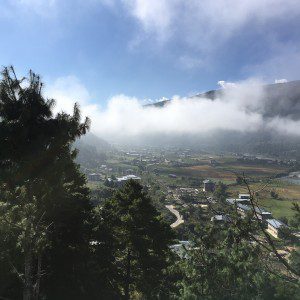 The photo, left, is one morning view from Karchu.
The photo, left, is one morning view from Karchu.
The senior’s English was a bit better than that of the junior monk, so he did some translating. I noticed that they spoke with each other with soft, tender voices, like intimates.
As we chatted, I asked them if they had phones. Almost everyone in Bhutan (and planet earth), including monks, has one and it’s common to see monks, especially younger ones, walking along, engrossed in their phones, just like people everywhere. In fact, that morning as I’d left my room before 7am to go to mediation in the prayer hall, a monk about their age had come stumbling up the stairs, much more into his phone than his stair climbing, so I had expected that they would have phones as well.
“No, we don’t have phones,” said the senior monk, “it’s against the rules.”
“But,” I mildly countered, “I’ve seen many monks with phones.”
“Yes, but they have to hide them in their robes (see photo below of monk with phone in hand).” And after a pause said, “Phones are trouble.”
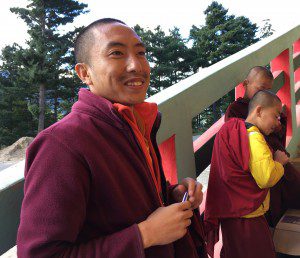
The senior then asked if they could escort me to dinner. We turned and walked slowly together, shoulders almost touching, down the mountain.
As we walked, the junior asked me about my family and I asked about theirs. When the conversation quieted, I asked about their favorite sutra, and the senior adroitly handled the question, saying, “The sutra we’re studying now.”
“Me too,” I said.
As we approached the dining hall, feeling fatherly, I said, “You know, in my home country, people are interested in lay practice, but there are not many monks. I hope you remain monks and help keep the Bhutanese monastic tradition alive – this is very important.”
Then they were silent and we reached the seam of light and shadow near the dining hall. “Please come in,” I said, “and meet my friends.”
But they motioned that they could not and so we exchanged bows and went on with our journeys.
I’d come to Bhutan to make some presentations at a retreat, “Cultivating Dharma in Relationships, Caring for the Planet, Altruism and Intention,” at Lhodrak Karchu Monastery, in the Bumtang region, as one of several Western dharma teachers (along with Matthieu Ricard, Lama Thupten Rinpoche, Judy Lief in that order, left to right, in the photo below). The tour and conference was organized by Two Truths Travel and the indefatigably hopeful Marla and Charles. The talks will be used for an online course offered by Tricycle, available early in 2017.
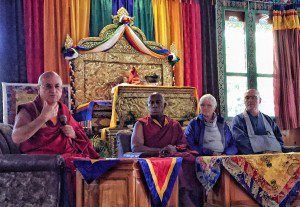
The Bumthang area and people are steeped in the narrative of the buddhadharma and the area is rich in sacred sites complete with fabulous tales of the visits of many great lamas, including the highest saint in Bhutanese Buddhism, the 8th century figure, Padmasambhava, or Guru Rinpoche, who seems to be what Dogen is for Soto Zen, times ten or so.
After the conference, a group of us visited the monastery that was built up around the cave that Guru Rinpoche is reputed to have sat in for three months. He left an impression of his hand or back print in the rock. I say hand or back because I heard different accounts and asked quite a few people about this but got equal responses for both body parts. In any case, Guru Rinpoche is reputed to have then transmogrified into a giant Garuda and subdued a local deity who had transmogrified into a giant serpent.
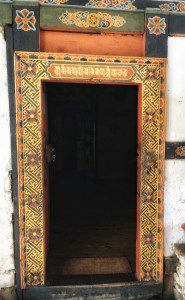
In present times, Guru Rinpoche’s cave, one of many in Bhutan and Tibet, is surrounded by a beautiful monastery, inside a hall with dark wooden floors and hundreds of figures of past lamas and celestial bodhisattvas. On the left is the door to the area, but, sorry, no photos are allowed inside. As we gazed into the cave, we could only see a golden figure of Guru Rinpoche, blocking the view of reputed body-part impression. Then as we wandered around the hall, gazing at the various figures, a young monk slid along behind us, a wiping cloth under each foot, keeping the floor perpetually free from dust.
What are my key take aways from the trip?
First, the kindness and generosity of my traveling companions and our Bhutanese hosts was outstanding and inspiring. The tour guides worked so diligently to assure our well-being and accommodate the many wishes of our group. Yeshi, one of our most enthusiastic guides is pictured below in the male version of Bhutanese formal attire, worn almost all the time, giving directions for crossing a suspension bridge.
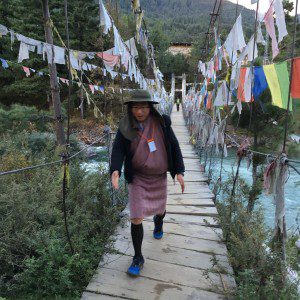
Second, I learned a lot about Tibetan Buddhism from Matthieu, Judy, and Thupten Rinpoche, as well as from our Bhutanese presenter, Dr. Karma Phuntsho (pictured with me below), especially their approach and compassion practices. I think Zen in the West could do more to offer as clear a practice path for opening the heart of compassion.
Third, I gained a fresh appreciation for what Zen has to offer as we move into the 21st century and a global dharma culture. Namely, a simple and direct path of realizing and practicing nonduality, only lighted weighted with medieval cultural aspects.
And so I return to Omaha and my work with the Nebraska Zen Center, ready to settle into life on the Great Plains, eager to offer what I can offer, and determined to walk along together with the group of students that gathers here, up the proverbial mountain and back down, again and again.
